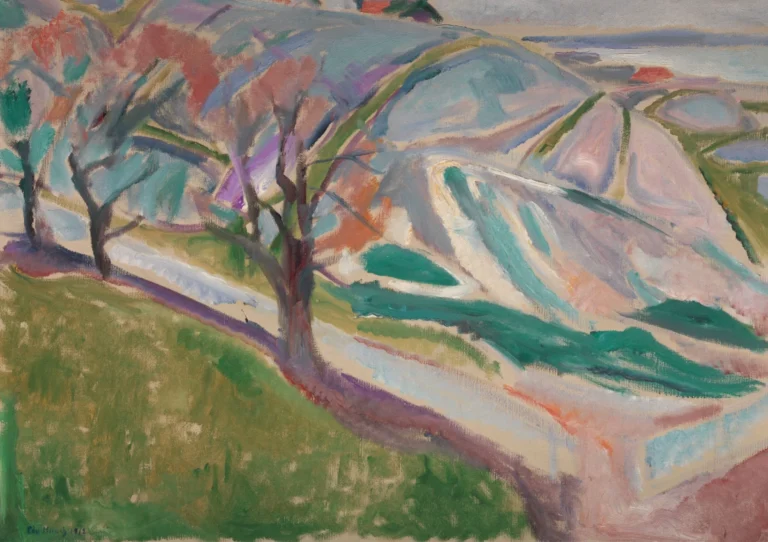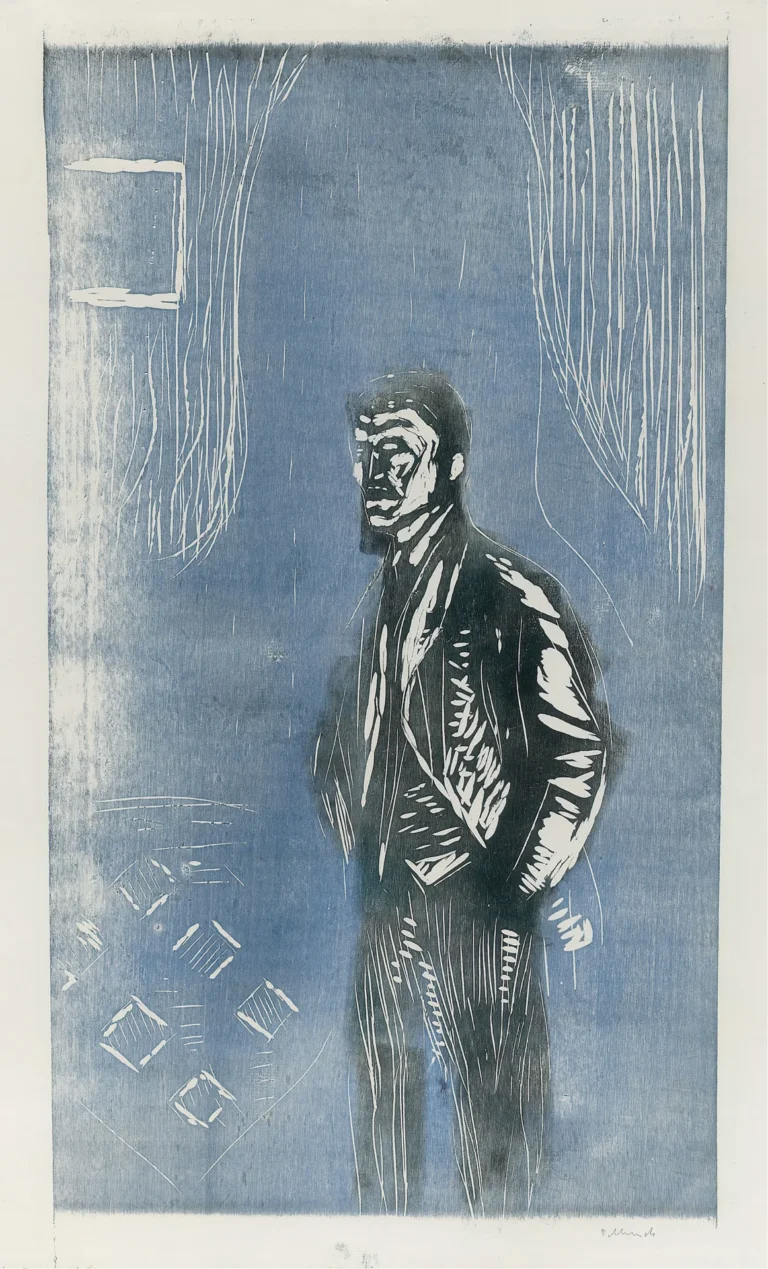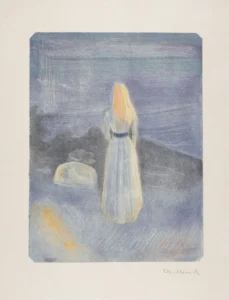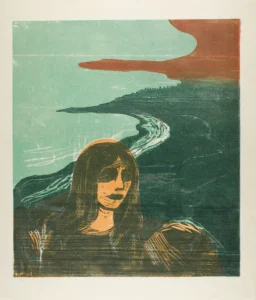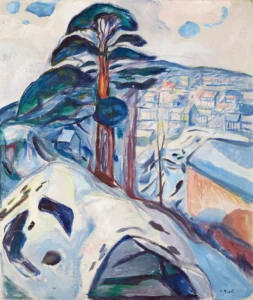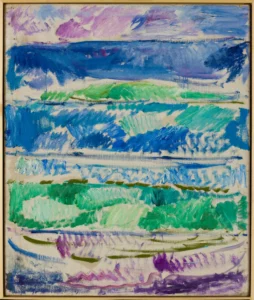Landscape, Kragerom (1912)
Edvard Munch's "Landscape, Kragerom" is a stunning representation of the scenic beauty found in the coastal town of Kragerø, Norway. Completed in 1912, this artwork highlights Munch's signature style of simplified forms and emotional depth. The painting serves as a reflection on the harmonious relationship between humanity and nature, while also expressing the deeper sentiments of longing and melancholy that Munch often explored in his oeuvre.
Year 1912
About the Artwork
The creation of "Landscape, Kragerom" was set against the backdrop of Munch's visits to the picturesque coastal landscapes of Norway, particularly during a time when the area was experiencing a horticultural boom. Munch found great inspiration in the interaction of humans with nature, and this painting embodies his fascination with how traditional farming and modernization shaped these interactions. By utilizing quick brush strokes and an emotive color palette, Munch captivates the viewer, inviting them to engage with the nuanced emotional landscapes that lie within the natural world.
Did You Know
Liked what you see? Add it to your collection.
Enjoyed reading? Share it.
... continued
Location and Inspiration
Kragerø is a coastal town in Norway, and Munch often drew inspiration from the fertile coastal areas around the Oslofjord, including places like Åsgårdstrand, Kragerø, and Hvitsten. These locations were significant to him as they reflected a horticultural boom in Norway and allowed him to depict traditional small-scale farming practices and the interaction between humans and nature.
Style and Themes
Munch's landscape paintings from this period are characterized by several key elements: Simplification of Form and Play of Line: Munch often used quick, gentle brush strokes and simplified forms to emphasize the surface of the painting and create a sense of space and perspective. Human Interaction with Nature: His landscapes frequently highlight the relationship between humans and the natural environment, sometimes depicting traditional farming practices and the impact of modernization on these practices. Emotional and Symbolic Depth: Munch's landscapes were not just representations of nature but also embodied human moods and anxieties. The surroundings in his paintings often absorbed the inner landscapes of the people within them, reflecting emotions such as melancholy, longing, and zest for life.
Possible Characteristics of "Landscape, Kragerøm"
Given these themes and styles, "Landscape, Kragerøm" (1912) likely features elements such as: A focus on the natural scenery of Kragerø, possibly including coastal or rural landscapes. Use of expressive brushwork and simplified forms to capture the essence of the scene. An emphasis on the interaction between nature and any human presence, whether through traces of human activity or the depiction of people engaging with the landscape. A reflection of Munch's emotional and symbolic approach to landscape painting, where the natural setting conveys deeper human emotions and experiences.





